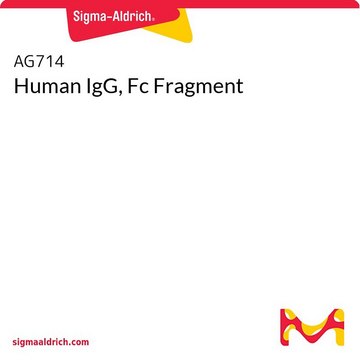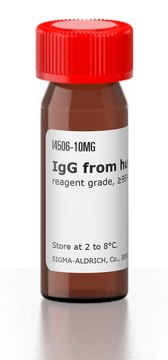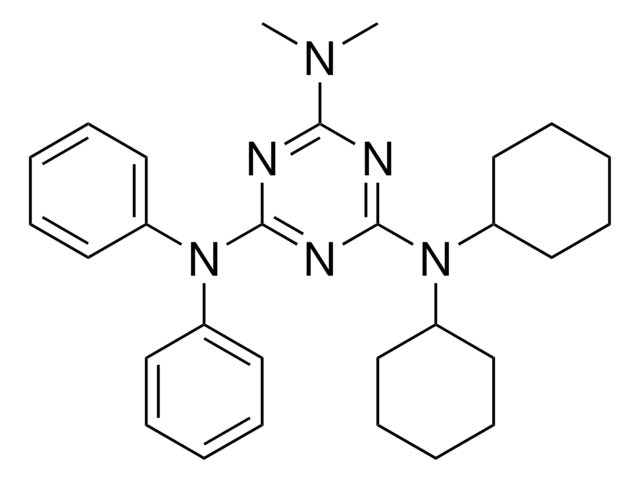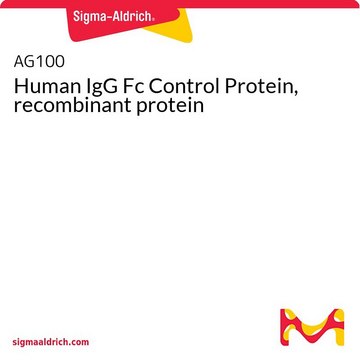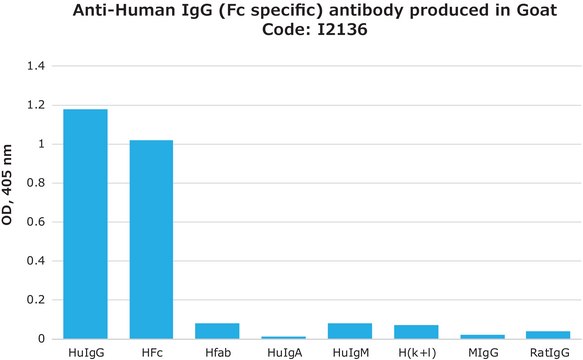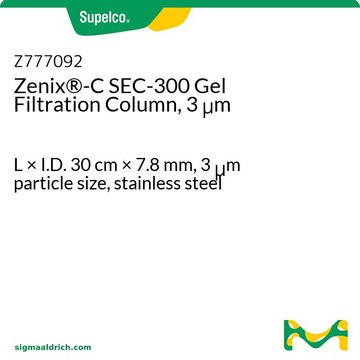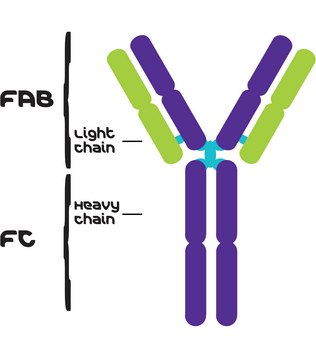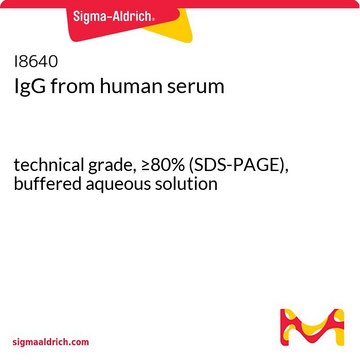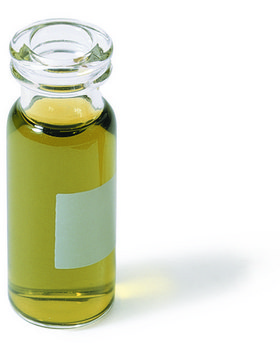Recommended Products
Assay
≥95% (SDS-PAGE)
Quality Level
form
liquid
contains
≤0.1% sodium azide as preservative
manufacturer/tradename
Calbiochem®
storage condition
OK to freeze
shipped in
ambient
storage temp.
2-8°C
General description
Native IgG Fc fragment derived from normal human plasma IgG.
Warning
Toxicity: Standard Handling (A)
Physical form
In 200 mM NaCl, 50 mM Tris-HCl with sodium azide, pH 8.0.
Preparation Note
Prepared from plasma shown by certified tests to be nonreactive for HBsAg and antibodies to HCV, HBc, HIV-1 and HIV-2.
Reconstitution
Following initial thaw, aliquot and freeze (-20°C). Please refer to the certificate of analysis for concentration prior to lyophilization.
Other Notes
Variables associated with assay conditions will dictate the proper working dilution.
Legal Information
CALBIOCHEM is a registered trademark of Merck KGaA, Darmstadt, Germany
Disclaimer
RESEARCH USE ONLY. This product is regulated in France when intended to be used for scientific purposes, including for import and export activities (Article L 1211-1 paragraph 2 of the Public Health Code). The purchaser (i.e. enduser) is required to obtain an import authorization from the France Ministry of Research referred in the Article L1245-5-1 II. of Public Health Code. By ordering this product, you are confirming that you have obtained the proper import authorization.
Signal Word
Danger
Hazard Statements
Precautionary Statements
Hazard Classifications
Acute Tox. 3 Dermal - Acute Tox. 4 Inhalation - Acute Tox. 4 Oral - Aquatic Chronic 3
Storage Class Code
6.1C - Combustible acute toxic Cat.3 / toxic compounds or compounds which causing chronic effects
WGK
WGK 1
Certificates of Analysis (COA)
Search for Certificates of Analysis (COA) by entering the products Lot/Batch Number. Lot and Batch Numbers can be found on a product’s label following the words ‘Lot’ or ‘Batch’.
Already Own This Product?
Find documentation for the products that you have recently purchased in the Document Library.
L-P Croteau et al.
Scientific reports, 9(1), 12009-12009 (2019-08-21)
Axonal growth cones are guided by molecular cues in the extracellular environment. The mechanisms of combinatorial integration of guidance signals at the growth cone cell membrane are still being unravelled. Limb-innervating axons of vertebrate spinal lateral motor column (LMC) neurons
Maria J Serrano et al.
Journal of cellular physiology, 230(12), 2961-2972 (2015-04-22)
The mammalian secondary palate forms from shelves of epithelia-covered mesenchyme that meet at midline and fuse. The midline epithelial seam (MES) is thought to degrade by apoptosis, epithelial-to-mesenchymal transition (EMT), or both. Failure to degrade the MES blocks fusion and
Shaun M Logan et al.
Journal of cellular physiology, 235(2), 1417-1424 (2019-07-03)
The mammalian secondary palate forms from two shelves of mesenchyme sheathed in a single-layered epithelium. These shelves meet during embryogenesis to form the midline epithelial seam (MES). Failure of MES degradation prevents mesenchymal confluence and results in a cleft palate.
E W Carter et al.
Journal of dairy science, 86(4), 1177-1186 (2003-05-14)
Staphylococcus aureus is a contagious pathogen that often results in chronic intramammary infections in dairy cows. Current vaccine formulations are ineffective in preventing this infection. The objective of this study was to stimulate an immune response in dairy cows through
Bernd Knöll et al.
Nature protocols, 2(5), 1216-1224 (2007-06-05)
Stripe assays have been widely employed as in vitro test systems to study the responses of growing axons, as well as migrating cells, to established or novel guidance molecules. We provide detailed protocols for both the original and the modified
Our team of scientists has experience in all areas of research including Life Science, Material Science, Chemical Synthesis, Chromatography, Analytical and many others.
Contact Technical Service